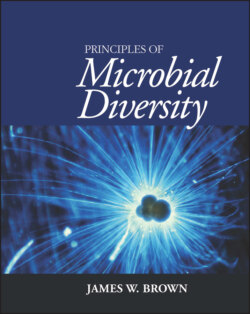Читать книгу Principles of Microbial Diversity - James W. Brown - Страница 36
Taxonomy and phylogeny
ОглавлениеA taxonomy is a classification scheme for species (or any other collection of objects, for that matter). There are three related components of a biological taxonomy:
1 1. Grouping: The organization of organisms into groups based on similarity
2 2. Naming: The labeling of organisms and groups of organisms with names
3 3. Identifying: The identification of organisms when they are found
Taxonomies are artificial constructions, methods created and used by humans to organize species. Any self-consistent taxonomy is valid, whether it reflects the natural relationships of the organisms or not.
For example, wildflower field guides organize species by features that are readily observed in the field. The first division might be by flower color, a trivial feature of the plants in evolutionary terms but perfectly reasonable for taxonomy. There is no implication that plants with flowers of the same color are related phylogenetically or that plants with flowers of different colors are not related. The field guide is designed for grouping, naming, and identifying species, and so are useful taxonomies.
A phylogeny is the evolutionary pathway relating species. Think of a phylogeny as a large-scale genealogy of species. Phylogenies represent the actual natural relationships between organisms. They are most commonly displayed graphically in the form of phylogenetic trees.
Unfortunately, there are generally no natural delineations between groups in a phylogenetic tree. However, taxonomists can start with a phylogenetic tree and try to divide it into reasonable groups based on the branches of the tree and the phenotypes of the organisms. In doing so, they attempt to devise a taxonomy that reflects, or at least is consistent with, the phylogenetic relationships between the species.
The classical taxonomies of plants and animals are fairly good representations of the phylogenetic relationships between their members because the intricate morphology of these organisms reveals their ancestry. This is not true for microbes. There was no way to determine evolutionary relationships between Bacteria and Archaea or even between protists, algae, and fungi until the development of molecular phylogenetics, in which phylogenetic relationships are inferred on the basis of gene sequences.
